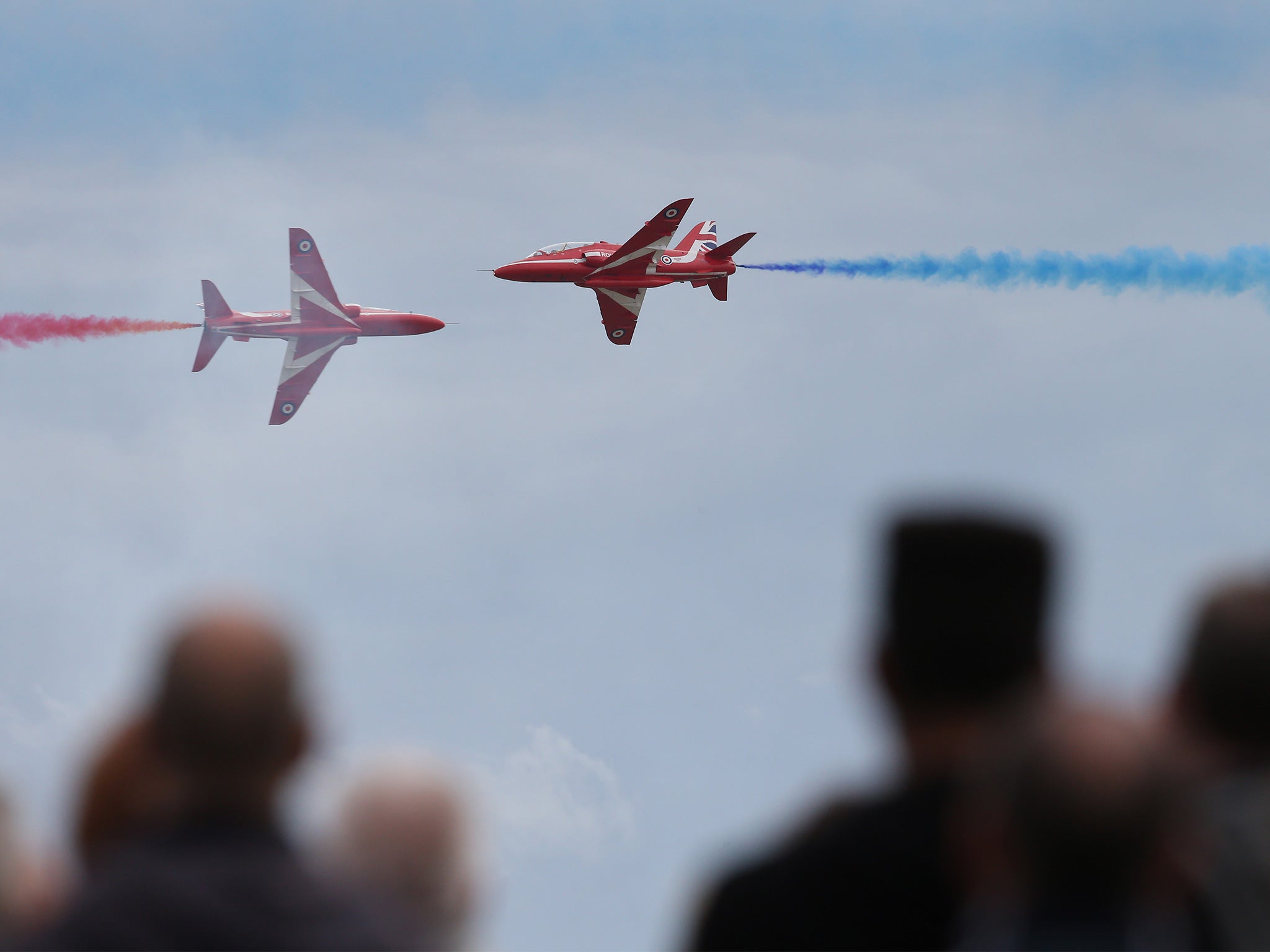Shoreham crash: Clacton Airshow draws crowd of 100,000 as spectators pay tribute to victims
The two-day event is the first air show since the West Sussex disaster

Even the announcer on the public address system at Clacton Airshow didn’t seem to know exactly which stunts the last flying Avro Vulcan bomber would be able to perform as she roared over the Essex coast.
“She may perform a level break or a spiral dive,” he announced to the crowds waiting for the Cold War nuclear bomber to perform off the beach at Clacton-On-Sea. “But as we all know, since the appalling events at Shoreham Airshow… the flying of vintage jets has been curtailed.”
In fact, the two-day Clacton Airshow is the first airshow since a 1955 Hawker Hunter jet crashed near the A27 on Saturday, in the worst airshow disaster in 60 years.
As well as claiming 11 lives and leaving veteran Hunter pilot Andy Hill in a medically induced coma, the disaster has prompted fresh regulations for vintage jets performing over land and fears for the future health of British airshows.
Today, amid the roar of the vintage Vulcan jet, which along with 10 other jets can no longer perform “high energy aerobatics” over land, and the delightful Merlin-engine note of a Battle of Britain Spitfire, some among the camera-wielding scores of spectators at Clacton Airshow quietly whispered their worries that the tragedy at Shoreham could signal the "end" of the British airshow scene.
The show had started with a tribute to the victims of the Shoreham Air disaster over the public address system, calling for a “moment of reflection”.
“The organisers got the tone just right,” said Derrek Farr, 76, who had come with a bus-load of pensioners from Ipswich to see the Red Arrows. “If anything did happen, which of course you hope it doesn’t, it would happen out to sea. Anyway, it looks just as busy as previous years.”
Elsewhere in the country though, organisers have rushed to cancel aerial performances at Durham Tees Valley, Wings and Wheels in Surrey and CarFest in Hampshire this weekend, while organisers at Dartmouth Royal Regatta and Little Gransden Air and Car show in Cambridge have replaced or amended displays featuring vintage jets this weekend.
However the safety team behind Clacton Airshow said they decided to go ahead because the displays take place of the sea and the event received “sign off” from the Civil Aviation Authority (CAA), which this week restricted the operation of eleven vintage jets to simple fly-pasts.
However former air accident investigators have questions why stunts by even older aircraft, such as Battle of Britain-era Spitfire and Hurricane that performed at Clacton Airshow, will not face any additional regulation in the wake of the Shoreham disaster.
Tony Cable, a former investigator with the Air Accident Safety Branch, said he was “surprised” that the CAA had decided to prohibit certain types of aircraft from carrying out stunts, rather than issuing a “blanket ban on high-risk manoeuvres”, which he said would “make more sense.”
He said: “Essentially whether something is a fast jet or a slower piston aircraft you don’t want it dumping down on a bunch of people. Low-level aerobatics is not usually a recipe for a long life, regardless of the type of aircraft.”
He added that aviation safety regulator needed to be become more proactive over airshows. “Sadly we seem to need body bags laid out for any action to be taken,” he said.
For its part the CAA said it would “not hesitate to introduce additional measures” to make airshows safer, and that current rules were designed to affect aircraft that “fly at much higher speeds and carry considerably more fuel” that Second World War aircraft.
Despite the new restrictions as many as 100,000 people attended the first day of free airshow at Clacton, as the sound track of the Battle of Britain gave way to Top Gun and performances from the Red Arrows, the Vulcan, which retires this summer, and a modern RAF Typhoon fast jet.
The Hawk jets of the Red Arrows dodged each other with just 6ft to spare at closing speeds of 800mph, but few spectators enjoying the sunshine in the crowd seemed to fear the high-adrenaline stunts or worry about a repeat of last weekend’s disaster.
“The crash [at Shoreham] didn’t put us off,” said Ashley Carden, who had travelled from Colchester with his family, folding chairs and a bottle chilled Prosecco. “It’s safer here because most pilots, if something terrible happens, will aim away from the spectators.”

He added: “In a way by not cancelling the show, they are paying respect to the Shoreham crash victims, by showing that there is still an interest in the planes and a respect to the pilots.”
Nonetheless, many in the aviation world fear last weekend disaster, and more generally the shrinking size of the Royal Air Force, could signal the “beginning of the end” of the airshow scene.
Tony Osborne, London bureau chief at Aviation Week, said: “There is a feeling in the enthusiast community that the restrictions on classic jets, while temporary are the beginning of the end for airshows in this country. Airshows already face extortionate costs and high levels of red tape, and this is likely to increase following the Shoreham crash.
“Classic jets [such as the Hawker Hunter] are a staple diet of British shows, most will have one or two classic jets in their show line-up, without them, shows are likely more reliant on the cash-constrained military for support.”
Join our commenting forum
Join thought-provoking conversations, follow other Independent readers and see their replies
Comments